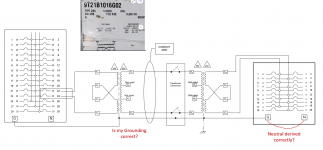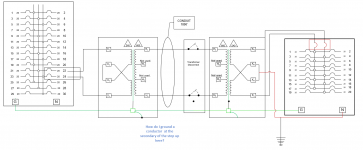Installer
Senior Member
- Location
- DesMoines, Washington
Here's a panel with a 2 pole 240 VAC Breaker feeding a 240/600 step up transformer followed by a 600/240 step down transformer. and a second panel.
How do I derive my Neutral at the second panel?
Is my grounding correct?
Is there a text book out there or any reference information where I can find this type of information?
Thank you in advance
Respectfully
Installer

How do I derive my Neutral at the second panel?
Is my grounding correct?
Is there a text book out there or any reference information where I can find this type of information?
Thank you in advance
Respectfully
Installer




